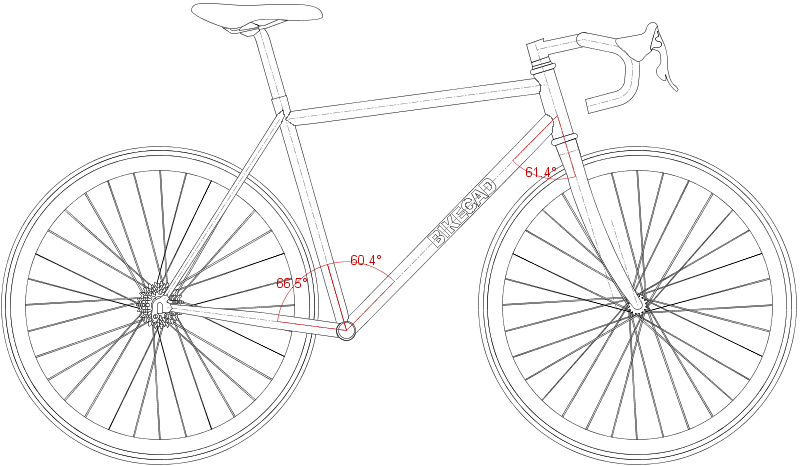The usual approach to designing a frame in BikeCAD is to specify the final geometry you want in terms of seat angle, head angle, effective top tube length, bottom bracket drop etc. Based on that information, BikeCAD Pro will tell you the length and angles at which to cut all the tubes and the resulting joint angles.
This approach is great for most people. However, if you have a set collection of lugs and you simply want to build a bike that uses these lug angles, there is currently no option to simply input the lug angles. To design a frame in BikeCAD that uses set lug angles. You should still start by designing the frame that best represents your ideal bicycle geometry. If after displaying the lug angles, as shown in the image below, the ideal bike does not possess the optimal joint angles to utilize the desired lug set, then compromises will have to be made. One approach would be to curve the tubes so that finished geometry is essentially the same, but the joint angles would be larger or smaller to suit the lugs. If curving the tubes is not an option, then raising or lowering the bottom bracket, or elongating or shortening the overall length of the frame will have to be done. The effect that changing the bottom bracket drop, the effective top tube length and the fork length has on lug angles is illustrated in the animated image below.

To design a frame that contains the required lug angles, gradually adjust dimensions such as bottom bracket drop, effective top tube length and fork length until the lug angles match those of your desired lug set.

